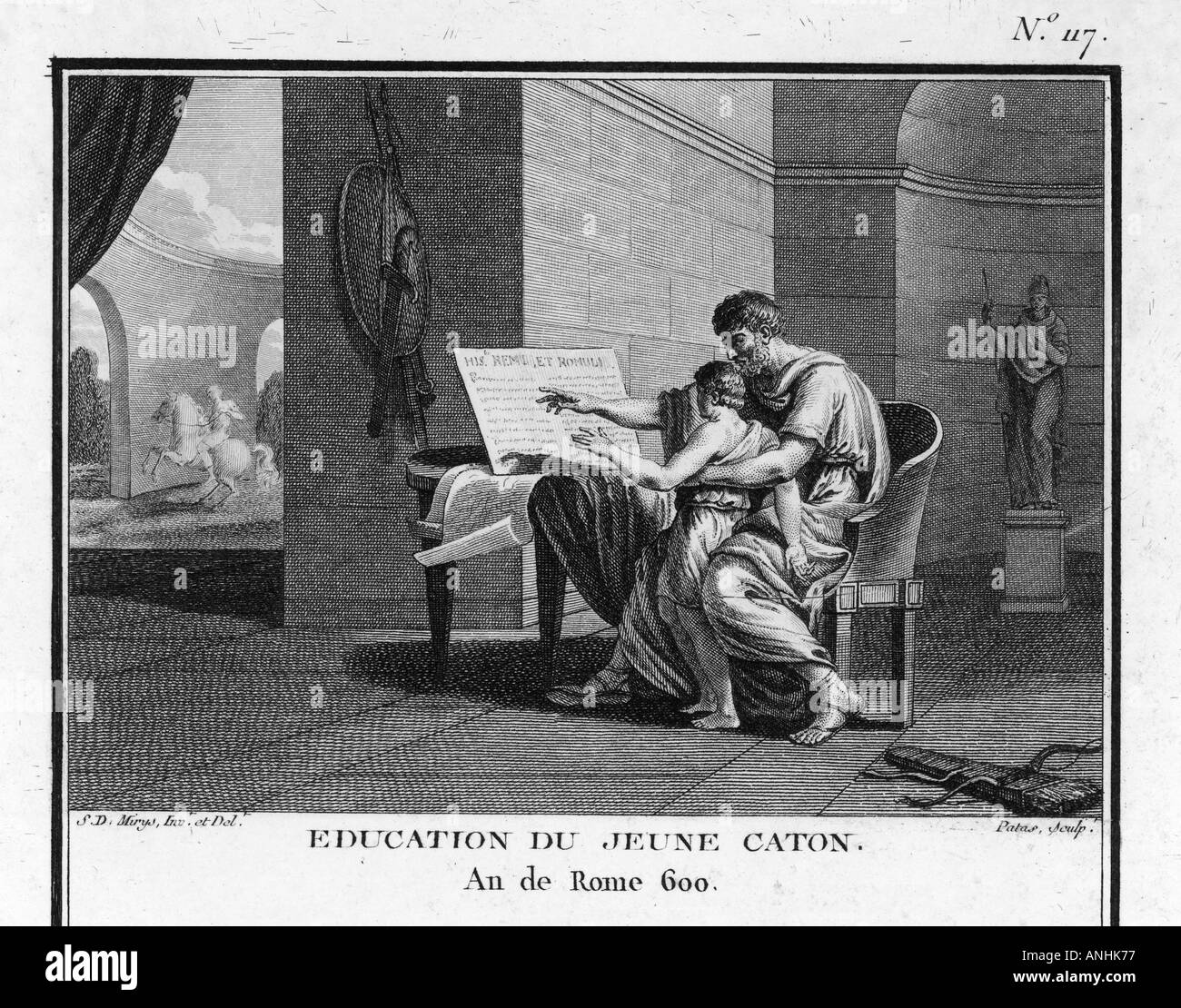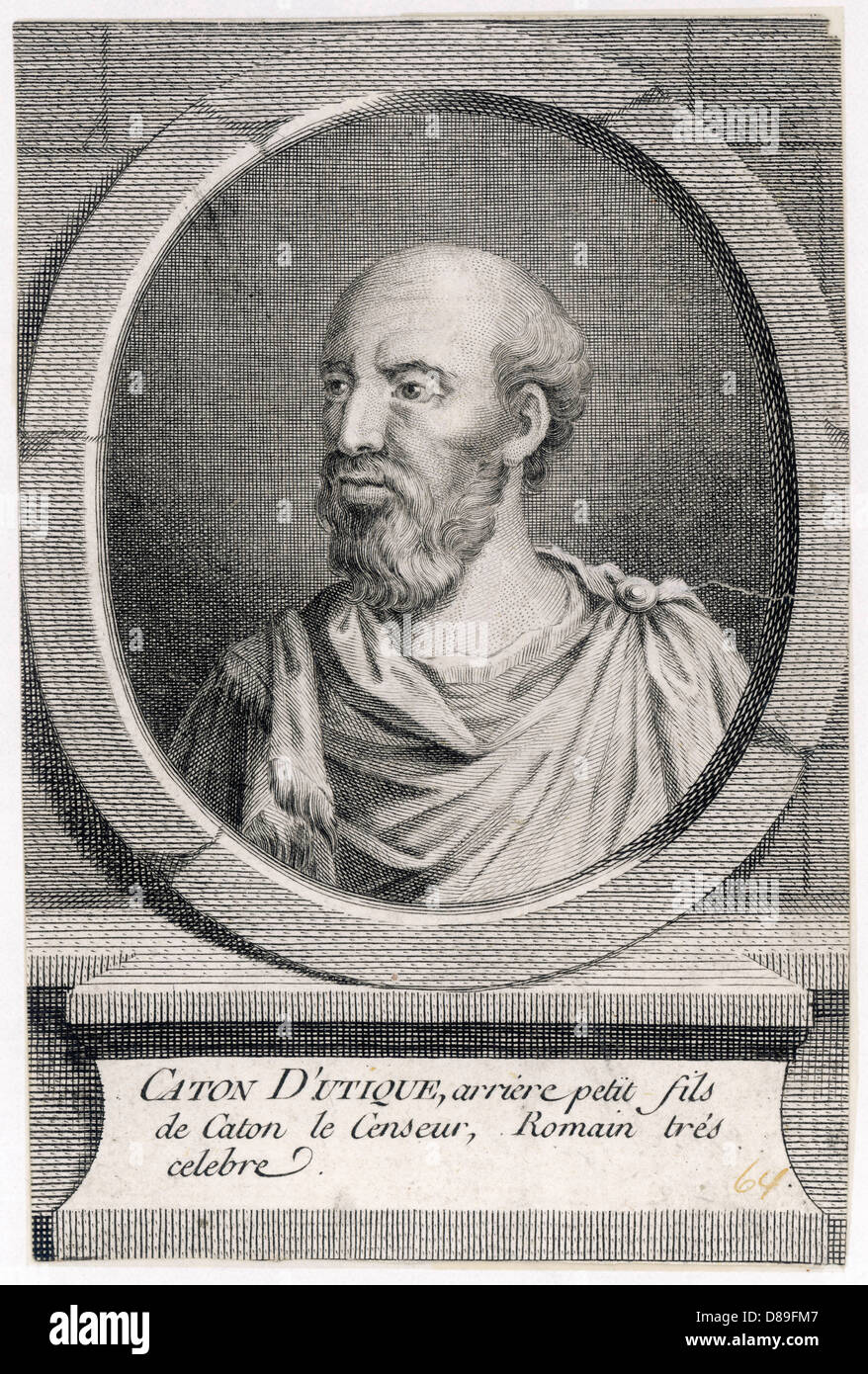Marcus porcius cato the censor Stock Photos and Images
(20)See marcus porcius cato the censor stock video clipsQuick filters:
Marcus porcius cato the censor Stock Photos and Images
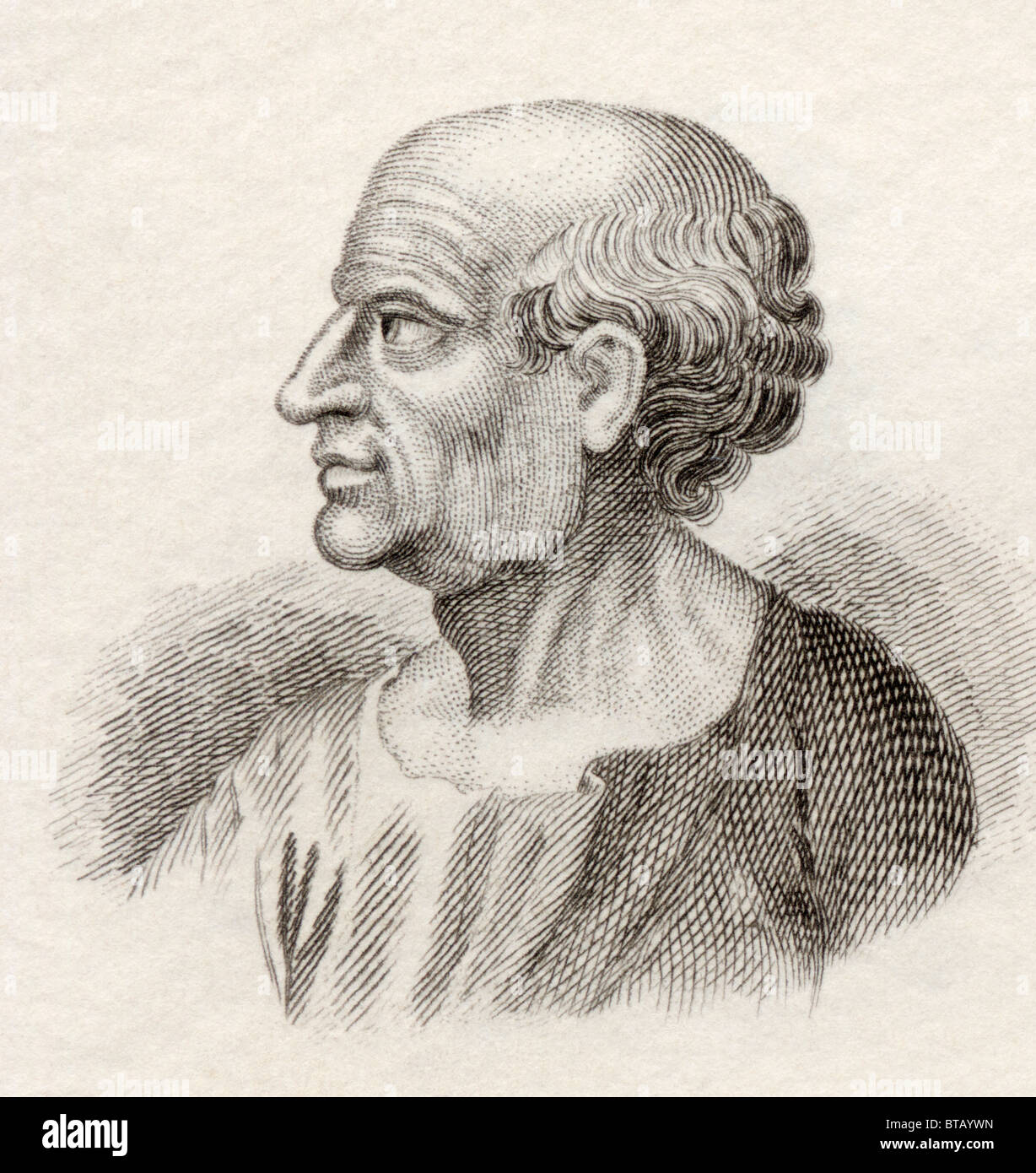 Marcus Porcius Cato, 234 BC - 149 BC. Roman statesman, commonly surnamed Censorius, the Censor, Sapiens, the Elder Stock Photohttps://www.alamy.com/image-license-details/?v=1https://www.alamy.com/stock-photo-marcus-porcius-cato-234-bc-149-bc-roman-statesman-commonly-surnamed-32203521.html
Marcus Porcius Cato, 234 BC - 149 BC. Roman statesman, commonly surnamed Censorius, the Censor, Sapiens, the Elder Stock Photohttps://www.alamy.com/image-license-details/?v=1https://www.alamy.com/stock-photo-marcus-porcius-cato-234-bc-149-bc-roman-statesman-commonly-surnamed-32203521.htmlRMBTAYWN–Marcus Porcius Cato, 234 BC - 149 BC. Roman statesman, commonly surnamed Censorius, the Censor, Sapiens, the Elder
 MARCUS PORCIUS CATO (234-149 BC), Roman statesman, known as Censorius (the Censor), Sapiens (the Wise), Priscus (the Ancient), or Maior (the Elder). Seen here educating his son. Stock Photohttps://www.alamy.com/image-license-details/?v=1https://www.alamy.com/marcus-porcius-cato-234-149-bc-roman-statesman-known-as-censorius-the-censor-sapiens-the-wise-priscus-the-ancient-or-maior-the-elder-seen-here-educating-his-son-image560828483.html
MARCUS PORCIUS CATO (234-149 BC), Roman statesman, known as Censorius (the Censor), Sapiens (the Wise), Priscus (the Ancient), or Maior (the Elder). Seen here educating his son. Stock Photohttps://www.alamy.com/image-license-details/?v=1https://www.alamy.com/marcus-porcius-cato-234-149-bc-roman-statesman-known-as-censorius-the-censor-sapiens-the-wise-priscus-the-ancient-or-maior-the-elder-seen-here-educating-his-son-image560828483.htmlRM2RGBXCK–MARCUS PORCIUS CATO (234-149 BC), Roman statesman, known as Censorius (the Censor), Sapiens (the Wise), Priscus (the Ancient), or Maior (the Elder). Seen here educating his son.
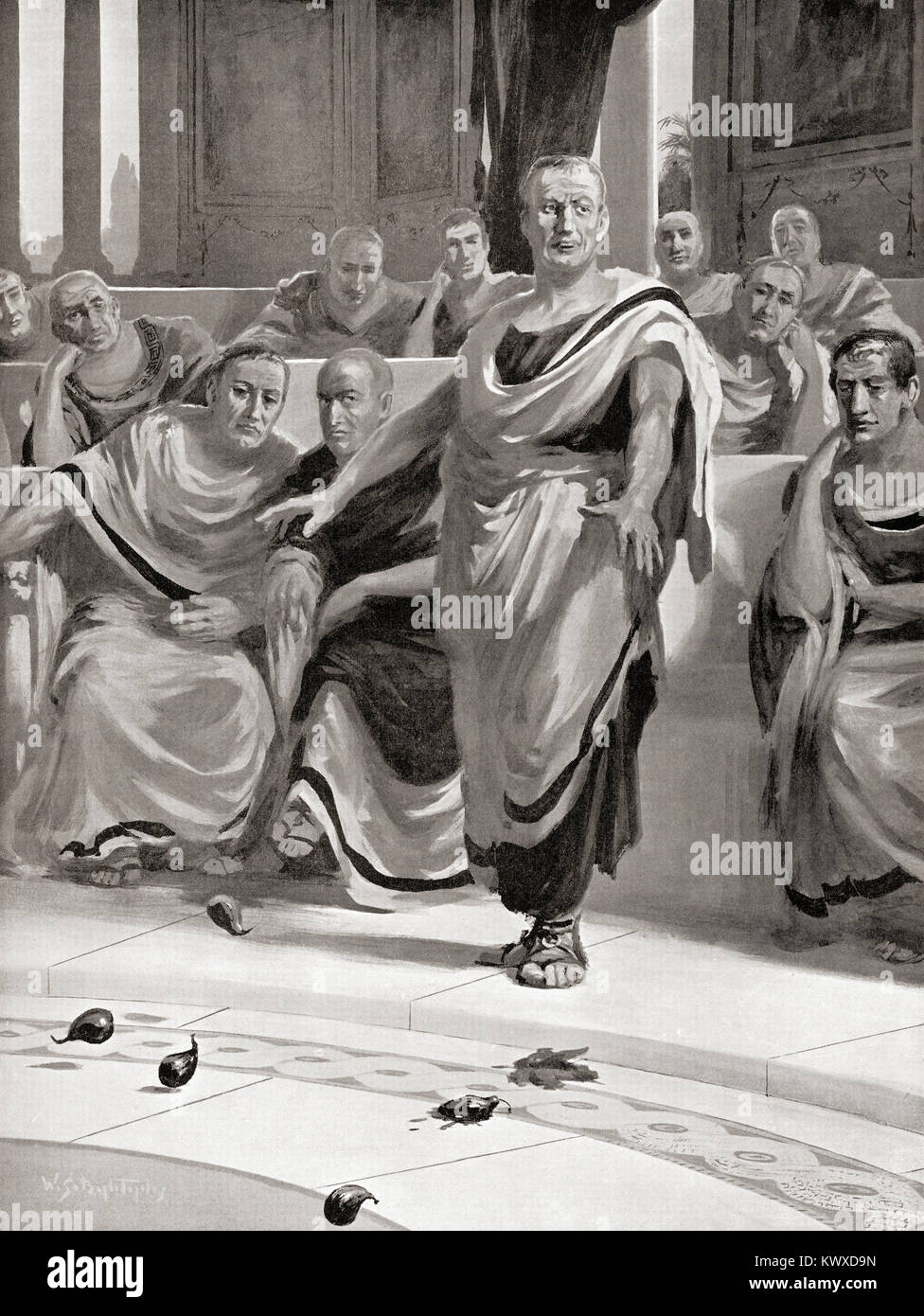 Delenda est Carthago, (Carthage must be destroyed) Latin oratorical phrase used by Cato the Elder to close all his speeches. Cato the Elder, 234 – 149 BC, born Marcus Porcius Cato, aka Cato the Censor, Cato the Wise, and Cato the Ancient. Roman senator and historian. After the painting by W.S. Bagdatopoulus, (1888 -1965). From Hutchinson's History of the Nations, published 1915. Stock Photohttps://www.alamy.com/image-license-details/?v=1https://www.alamy.com/stock-photo-delenda-est-carthago-carthage-must-be-destroyed-latin-oratorical-phrase-170840929.html
Delenda est Carthago, (Carthage must be destroyed) Latin oratorical phrase used by Cato the Elder to close all his speeches. Cato the Elder, 234 – 149 BC, born Marcus Porcius Cato, aka Cato the Censor, Cato the Wise, and Cato the Ancient. Roman senator and historian. After the painting by W.S. Bagdatopoulus, (1888 -1965). From Hutchinson's History of the Nations, published 1915. Stock Photohttps://www.alamy.com/image-license-details/?v=1https://www.alamy.com/stock-photo-delenda-est-carthago-carthage-must-be-destroyed-latin-oratorical-phrase-170840929.htmlRMKWXD9N–Delenda est Carthago, (Carthage must be destroyed) Latin oratorical phrase used by Cato the Elder to close all his speeches. Cato the Elder, 234 – 149 BC, born Marcus Porcius Cato, aka Cato the Censor, Cato the Wise, and Cato the Ancient. Roman senator and historian. After the painting by W.S. Bagdatopoulus, (1888 -1965). From Hutchinson's History of the Nations, published 1915.
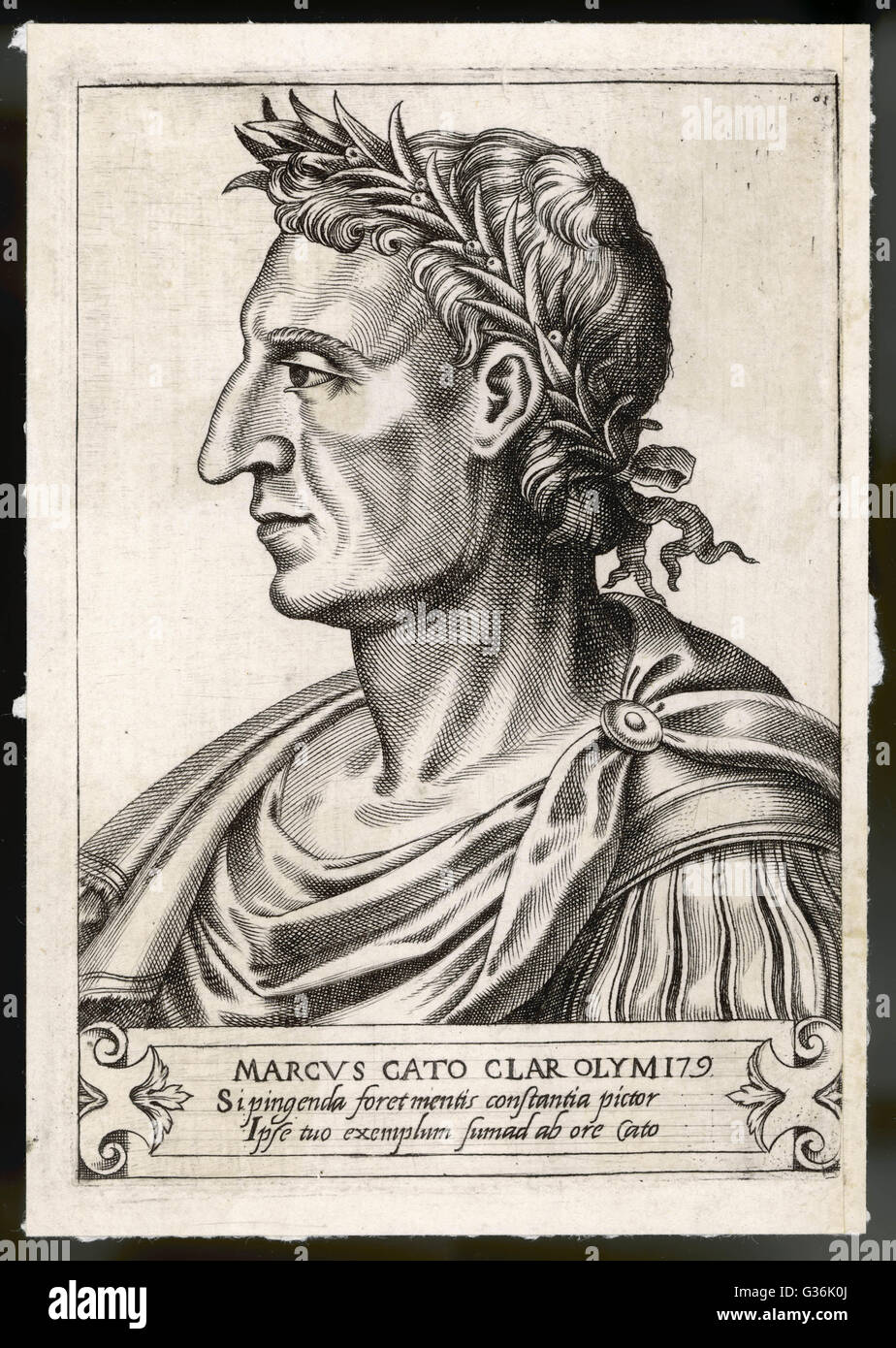 MARCUS PORCIUS CATO (234-149 BC), Roman statesman, known as Censorius (the Censor), Sapiens (the Wise), Priscus (the Ancient), or Maior (the Elder). Date: 234 - 149 BC Stock Photohttps://www.alamy.com/image-license-details/?v=1https://www.alamy.com/stock-photo-marcus-porcius-cato-234-149-bc-roman-statesman-known-as-censorius-105252802.html
MARCUS PORCIUS CATO (234-149 BC), Roman statesman, known as Censorius (the Censor), Sapiens (the Wise), Priscus (the Ancient), or Maior (the Elder). Date: 234 - 149 BC Stock Photohttps://www.alamy.com/image-license-details/?v=1https://www.alamy.com/stock-photo-marcus-porcius-cato-234-149-bc-roman-statesman-known-as-censorius-105252802.htmlRMG36K0J–MARCUS PORCIUS CATO (234-149 BC), Roman statesman, known as Censorius (the Censor), Sapiens (the Wise), Priscus (the Ancient), or Maior (the Elder). Date: 234 - 149 BC
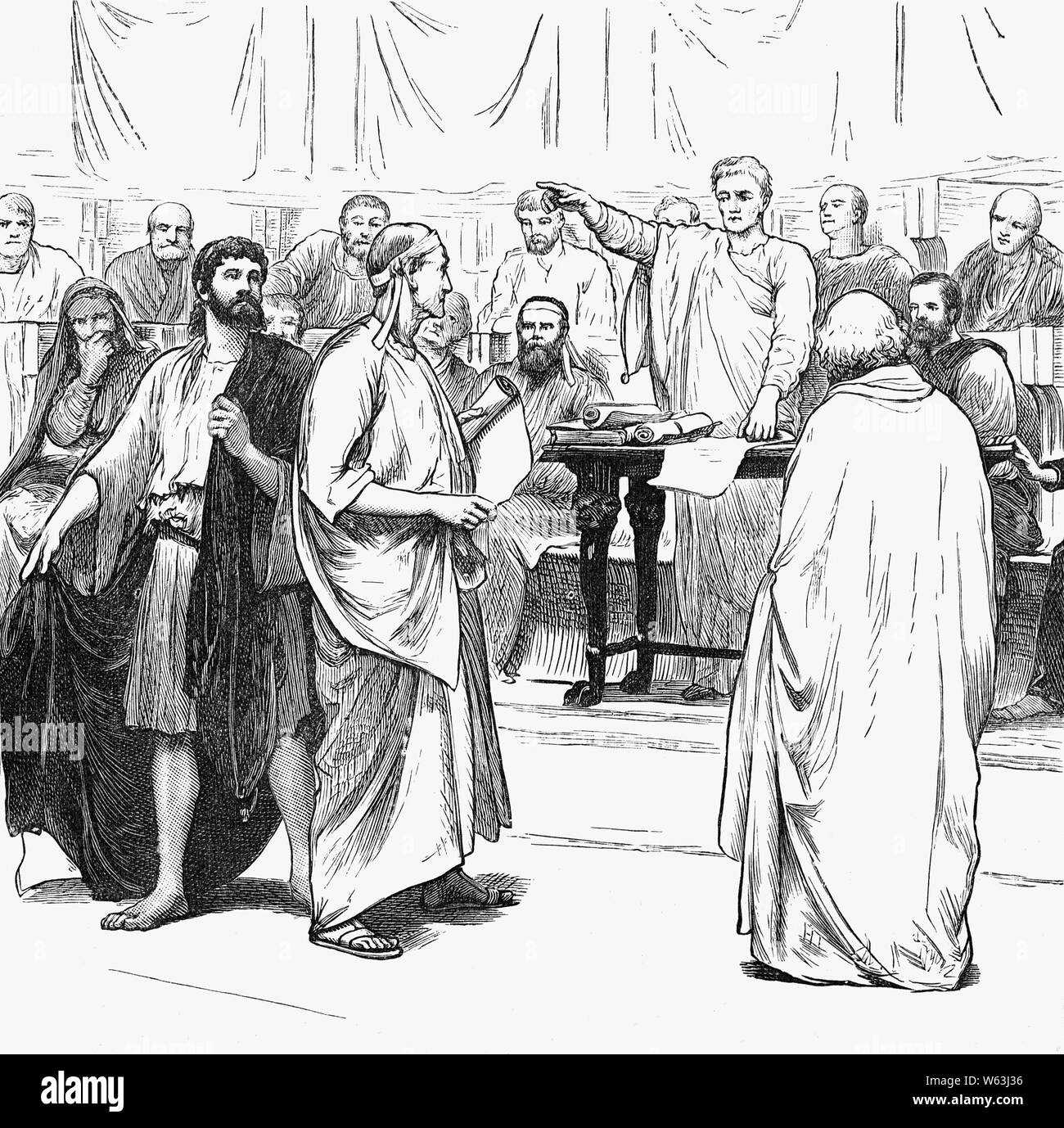 The expulsion from Rome of the Sophists, by Cato the Elder (234–149 BC), born Marcus Porcius Cato and also known as Cato the Censor; Cato the Wise; and Cato the Ancient, a Roman soldier, senator and historian known for his conservatism and opposition to Hellenization. The Sophists were teachers who taught subjects such as music, athletics, and mathematics predominantly to young statesmen and nobility. During the Second Sophistic, the Greek discipline of rhetoric heavily influenced Roman education. Stock Photohttps://www.alamy.com/image-license-details/?v=1https://www.alamy.com/the-expulsion-from-rome-of-the-sophists-by-cato-the-elder-234149-bc-born-marcus-porcius-cato-and-also-known-as-cato-the-censor-cato-the-wise-and-cato-the-ancient-a-roman-soldier-senator-and-historian-known-for-his-conservatism-and-opposition-to-hellenization-the-sophists-were-teachers-who-taught-subjects-such-as-music-athletics-and-mathematics-predominantly-to-young-statesmen-and-nobility-during-the-second-sophistic-the-greek-discipline-of-rhetoric-heavily-influenced-roman-education-image261923514.html
The expulsion from Rome of the Sophists, by Cato the Elder (234–149 BC), born Marcus Porcius Cato and also known as Cato the Censor; Cato the Wise; and Cato the Ancient, a Roman soldier, senator and historian known for his conservatism and opposition to Hellenization. The Sophists were teachers who taught subjects such as music, athletics, and mathematics predominantly to young statesmen and nobility. During the Second Sophistic, the Greek discipline of rhetoric heavily influenced Roman education. Stock Photohttps://www.alamy.com/image-license-details/?v=1https://www.alamy.com/the-expulsion-from-rome-of-the-sophists-by-cato-the-elder-234149-bc-born-marcus-porcius-cato-and-also-known-as-cato-the-censor-cato-the-wise-and-cato-the-ancient-a-roman-soldier-senator-and-historian-known-for-his-conservatism-and-opposition-to-hellenization-the-sophists-were-teachers-who-taught-subjects-such-as-music-athletics-and-mathematics-predominantly-to-young-statesmen-and-nobility-during-the-second-sophistic-the-greek-discipline-of-rhetoric-heavily-influenced-roman-education-image261923514.htmlRMW63J36–The expulsion from Rome of the Sophists, by Cato the Elder (234–149 BC), born Marcus Porcius Cato and also known as Cato the Censor; Cato the Wise; and Cato the Ancient, a Roman soldier, senator and historian known for his conservatism and opposition to Hellenization. The Sophists were teachers who taught subjects such as music, athletics, and mathematics predominantly to young statesmen and nobility. During the Second Sophistic, the Greek discipline of rhetoric heavily influenced Roman education.
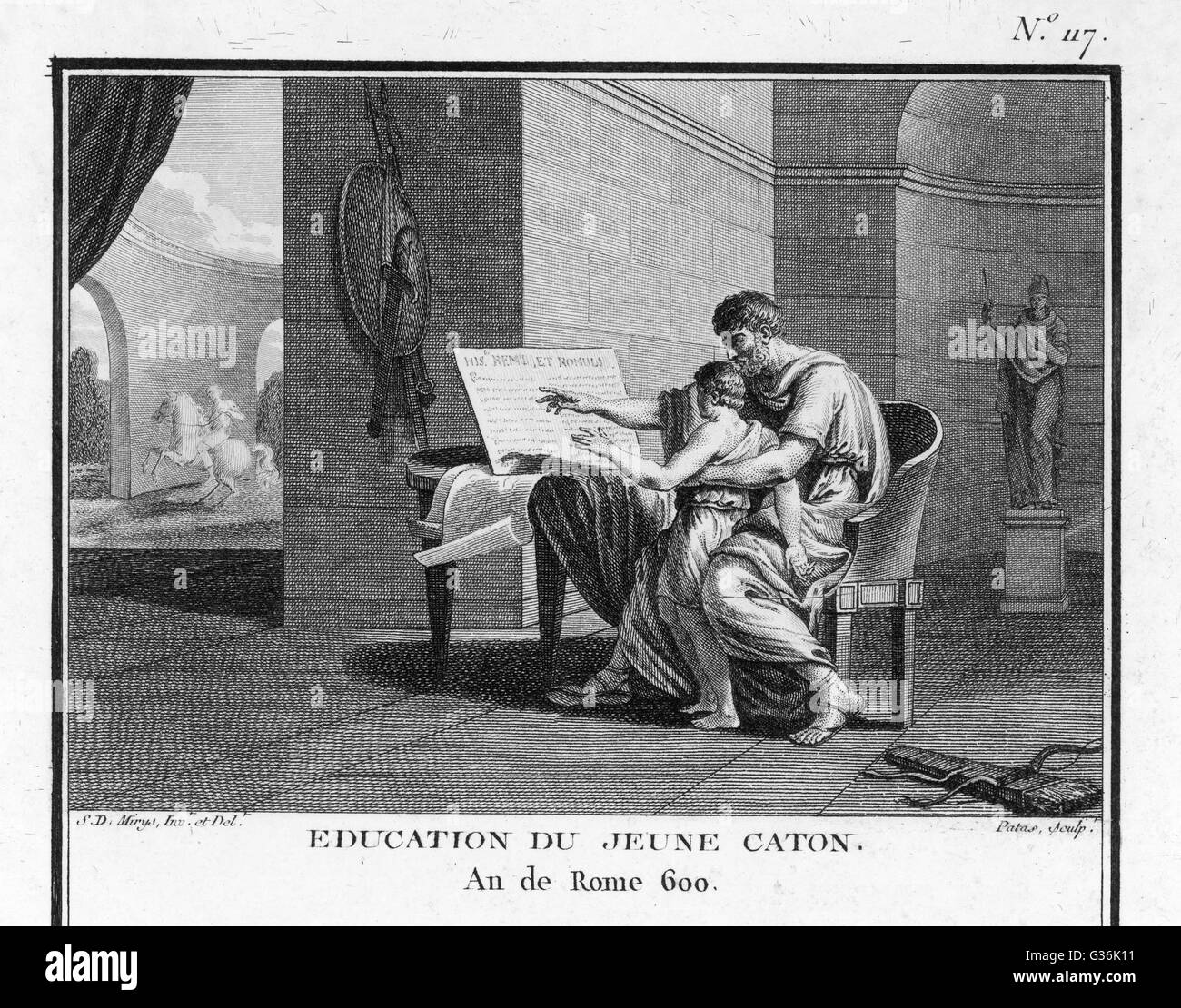 MARCUS PORCIUS CATO (234-149 BC), Roman statesman, known as Censorius (the Censor), Sapiens (the Wise), Priscus (the Ancient), or Maior (the Elder). Seen here educating his son. Date: 234 - 149 BC Stock Photohttps://www.alamy.com/image-license-details/?v=1https://www.alamy.com/stock-photo-marcus-porcius-cato-234-149-bc-roman-statesman-known-as-censorius-105252813.html
MARCUS PORCIUS CATO (234-149 BC), Roman statesman, known as Censorius (the Censor), Sapiens (the Wise), Priscus (the Ancient), or Maior (the Elder). Seen here educating his son. Date: 234 - 149 BC Stock Photohttps://www.alamy.com/image-license-details/?v=1https://www.alamy.com/stock-photo-marcus-porcius-cato-234-149-bc-roman-statesman-known-as-censorius-105252813.htmlRMG36K11–MARCUS PORCIUS CATO (234-149 BC), Roman statesman, known as Censorius (the Censor), Sapiens (the Wise), Priscus (the Ancient), or Maior (the Elder). Seen here educating his son. Date: 234 - 149 BC
 cato Marcus Porcius Cato (Latin: M·PORCIVS·M·F·CATO) (234 BC, Tusculum–149 BC) was a Roman statesman, surnamed the Censor (Ce Stock Photohttps://www.alamy.com/image-license-details/?v=1https://www.alamy.com/stock-photo-cato-marcus-porcius-cato-latin-mporcivsmfcato-234-bc-tusculum149-bc-21500851.html
cato Marcus Porcius Cato (Latin: M·PORCIVS·M·F·CATO) (234 BC, Tusculum–149 BC) was a Roman statesman, surnamed the Censor (Ce Stock Photohttps://www.alamy.com/image-license-details/?v=1https://www.alamy.com/stock-photo-cato-marcus-porcius-cato-latin-mporcivsmfcato-234-bc-tusculum149-bc-21500851.htmlRMB6YCFF–cato Marcus Porcius Cato (Latin: M·PORCIVS·M·F·CATO) (234 BC, Tusculum–149 BC) was a Roman statesman, surnamed the Censor (Ce
 Marcus Porcius Cato, Roman statesman Stock Photohttps://www.alamy.com/image-license-details/?v=1https://www.alamy.com/stock-photo-marcus-porcius-cato-roman-statesman-56671284.html
Marcus Porcius Cato, Roman statesman Stock Photohttps://www.alamy.com/image-license-details/?v=1https://www.alamy.com/stock-photo-marcus-porcius-cato-roman-statesman-56671284.htmlRMD85GPC–Marcus Porcius Cato, Roman statesman
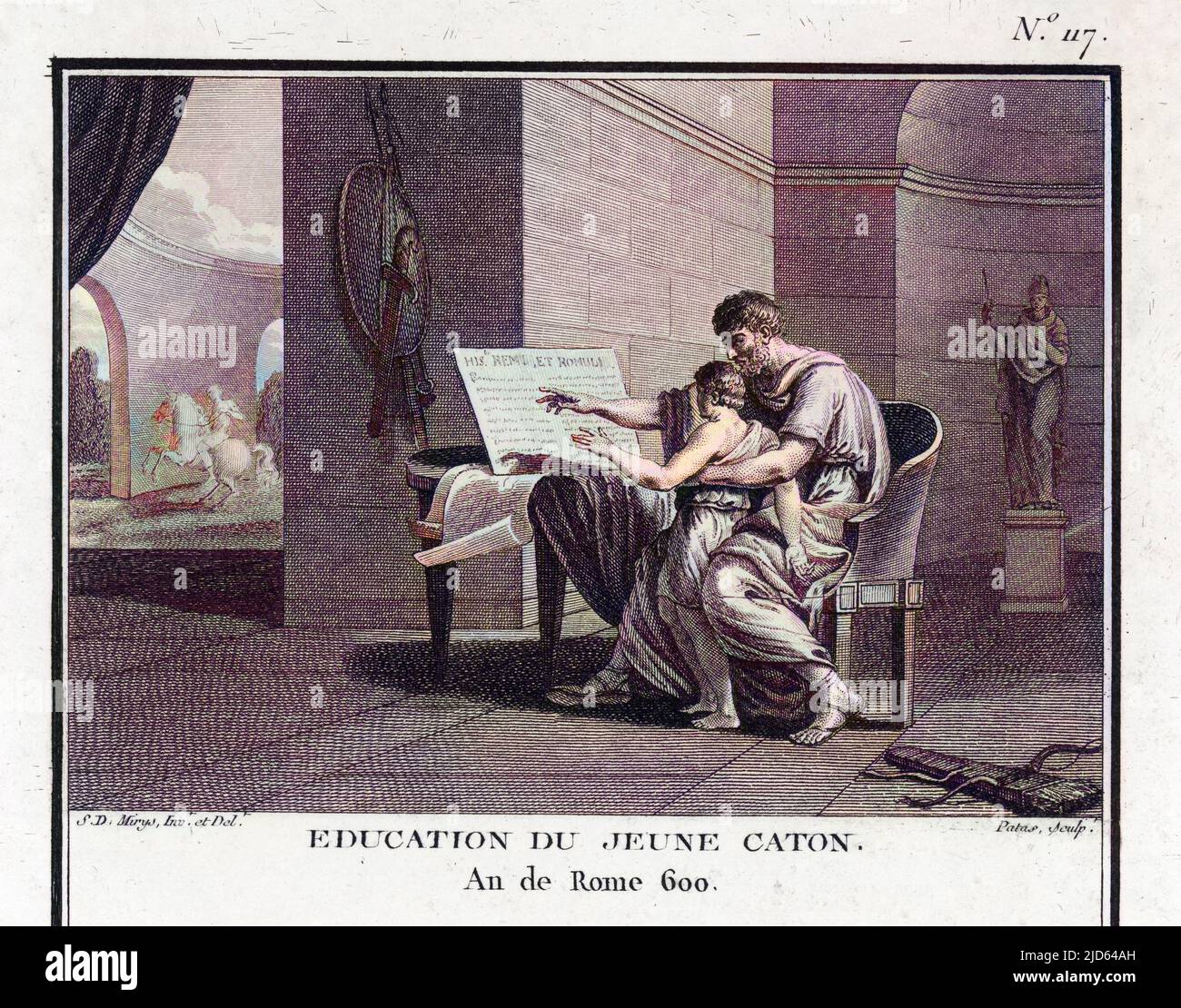 MARCUS PORCIUS CATO (234-149 BC), Roman statesman, known as Censorius (the Censor), Sapiens (the Wise), Priscus (the Ancient), or Maior (the Elder). Seen here educating his son. Colourised version of : 10000751 Date: 234 - 149 BC Stock Photohttps://www.alamy.com/image-license-details/?v=1https://www.alamy.com/marcus-porcius-cato-234-149-bc-roman-statesman-known-as-censorius-the-censor-sapiens-the-wise-priscus-the-ancient-or-maior-the-elder-seen-here-educating-his-son-colourised-version-of-10000751-date-234-149-bc-image472805609.html
MARCUS PORCIUS CATO (234-149 BC), Roman statesman, known as Censorius (the Censor), Sapiens (the Wise), Priscus (the Ancient), or Maior (the Elder). Seen here educating his son. Colourised version of : 10000751 Date: 234 - 149 BC Stock Photohttps://www.alamy.com/image-license-details/?v=1https://www.alamy.com/marcus-porcius-cato-234-149-bc-roman-statesman-known-as-censorius-the-censor-sapiens-the-wise-priscus-the-ancient-or-maior-the-elder-seen-here-educating-his-son-colourised-version-of-10000751-date-234-149-bc-image472805609.htmlRM2JD64AH–MARCUS PORCIUS CATO (234-149 BC), Roman statesman, known as Censorius (the Censor), Sapiens (the Wise), Priscus (the Ancient), or Maior (the Elder). Seen here educating his son. Colourised version of : 10000751 Date: 234 - 149 BC
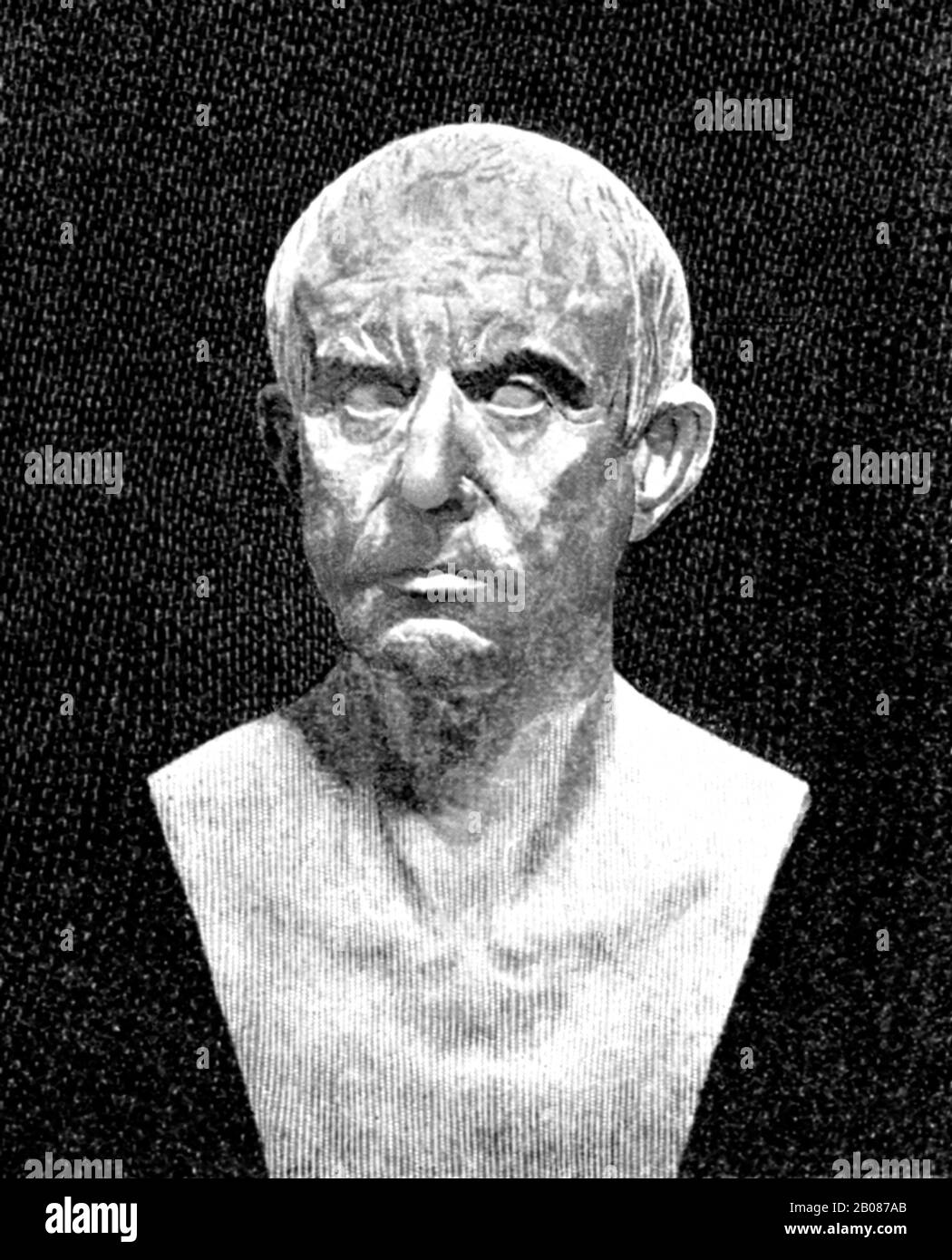 Marcus Porcius Cato (234-149 B.C.) was renowned for his strong opposition to luxury, believing the Hellenic culture threatened Rome. As censor, he scrutinized the conduct of candidates running for office and of military generals. He urged the Romans to destroy Carthage, with the words Carthago delenda est (Carthage must be destroyed). He wrote several books, one a manual on running a farm. Stock Photohttps://www.alamy.com/image-license-details/?v=1https://www.alamy.com/marcus-porcius-cato-234-149-bc-was-renowned-for-his-strong-opposition-to-luxury-believing-the-hellenic-culture-threatened-rome-as-censor-he-scrutinized-the-conduct-of-candidates-running-for-office-and-of-military-generals-he-urged-the-romans-to-destroy-carthage-with-the-words-carthago-delenda-est-carthage-must-be-destroyed-he-wrote-several-books-one-a-manual-on-running-a-farm-image344388755.html
Marcus Porcius Cato (234-149 B.C.) was renowned for his strong opposition to luxury, believing the Hellenic culture threatened Rome. As censor, he scrutinized the conduct of candidates running for office and of military generals. He urged the Romans to destroy Carthage, with the words Carthago delenda est (Carthage must be destroyed). He wrote several books, one a manual on running a farm. Stock Photohttps://www.alamy.com/image-license-details/?v=1https://www.alamy.com/marcus-porcius-cato-234-149-bc-was-renowned-for-his-strong-opposition-to-luxury-believing-the-hellenic-culture-threatened-rome-as-censor-he-scrutinized-the-conduct-of-candidates-running-for-office-and-of-military-generals-he-urged-the-romans-to-destroy-carthage-with-the-words-carthago-delenda-est-carthage-must-be-destroyed-he-wrote-several-books-one-a-manual-on-running-a-farm-image344388755.htmlRF2B087AB–Marcus Porcius Cato (234-149 B.C.) was renowned for his strong opposition to luxury, believing the Hellenic culture threatened Rome. As censor, he scrutinized the conduct of candidates running for office and of military generals. He urged the Romans to destroy Carthage, with the words Carthago delenda est (Carthage must be destroyed). He wrote several books, one a manual on running a farm.
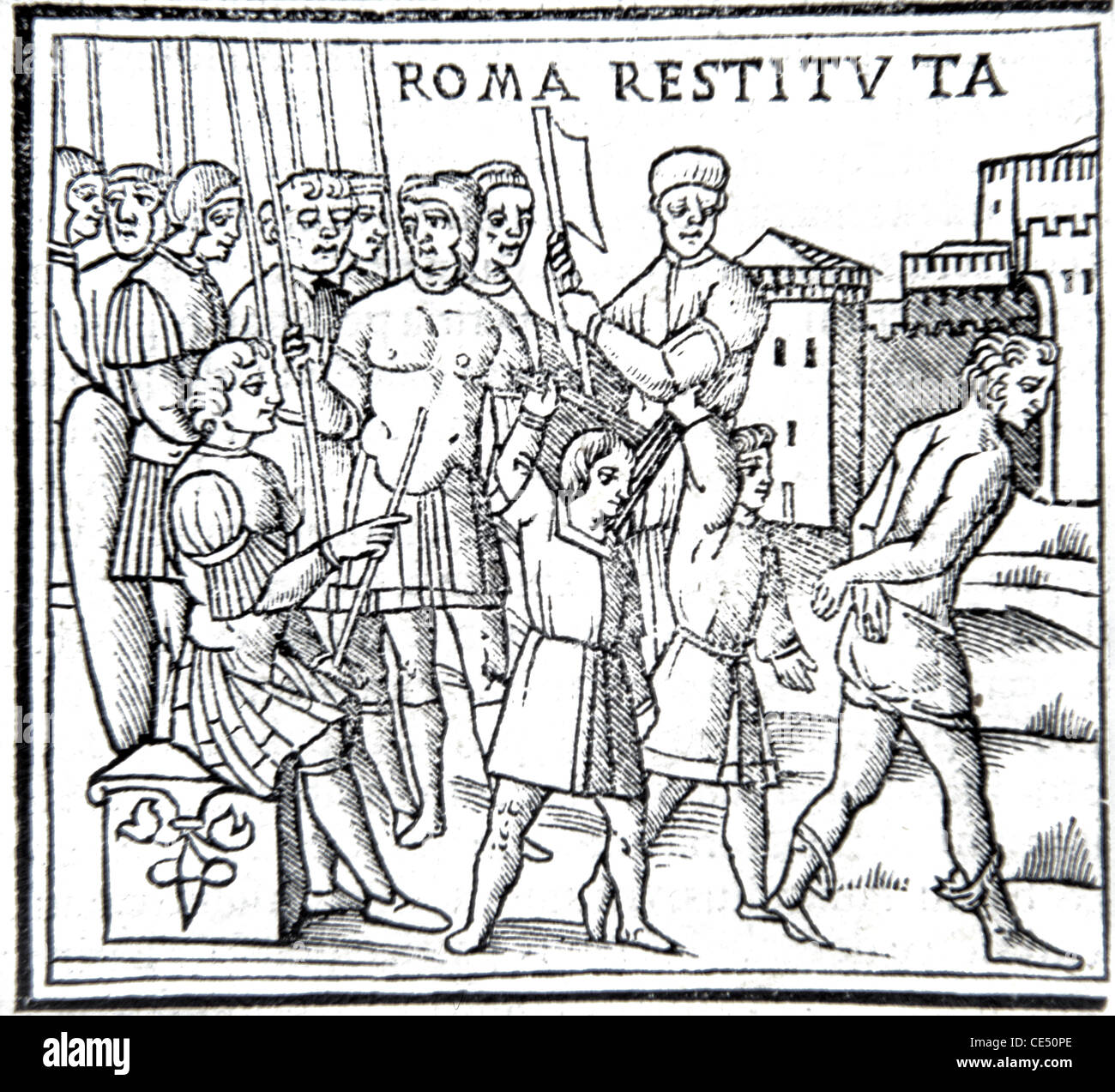 Cato the Elder or Cato the Censor (234-149BC) reclaims Roman Commonwealth by Classifying Citizens, c16th Wood Engraving Stock Photohttps://www.alamy.com/image-license-details/?v=1https://www.alamy.com/stock-photo-cato-the-elder-or-cato-the-censor-234-149bc-reclaims-roman-commonwealth-43136310.html
Cato the Elder or Cato the Censor (234-149BC) reclaims Roman Commonwealth by Classifying Citizens, c16th Wood Engraving Stock Photohttps://www.alamy.com/image-license-details/?v=1https://www.alamy.com/stock-photo-cato-the-elder-or-cato-the-censor-234-149bc-reclaims-roman-commonwealth-43136310.htmlRMCE50PE–Cato the Elder or Cato the Censor (234-149BC) reclaims Roman Commonwealth by Classifying Citizens, c16th Wood Engraving
 Cato and Porcia. Marcus Porcius Cato, 234 BC to 149 BC Roman statesman, Ancient roman empire. Italy, Europe. Old 19th century engraved illustration, El Mundo Ilustrado 1881 Stock Photohttps://www.alamy.com/image-license-details/?v=1https://www.alamy.com/cato-and-porcia-marcus-porcius-cato-234-bc-to-149-bc-roman-statesman-ancient-roman-empire-italy-europe-old-19th-century-engraved-illustration-el-mundo-ilustrado-1881-image410522407.html
Cato and Porcia. Marcus Porcius Cato, 234 BC to 149 BC Roman statesman, Ancient roman empire. Italy, Europe. Old 19th century engraved illustration, El Mundo Ilustrado 1881 Stock Photohttps://www.alamy.com/image-license-details/?v=1https://www.alamy.com/cato-and-porcia-marcus-porcius-cato-234-bc-to-149-bc-roman-statesman-ancient-roman-empire-italy-europe-old-19th-century-engraved-illustration-el-mundo-ilustrado-1881-image410522407.htmlRM2ERTWEF–Cato and Porcia. Marcus Porcius Cato, 234 BC to 149 BC Roman statesman, Ancient roman empire. Italy, Europe. Old 19th century engraved illustration, El Mundo Ilustrado 1881
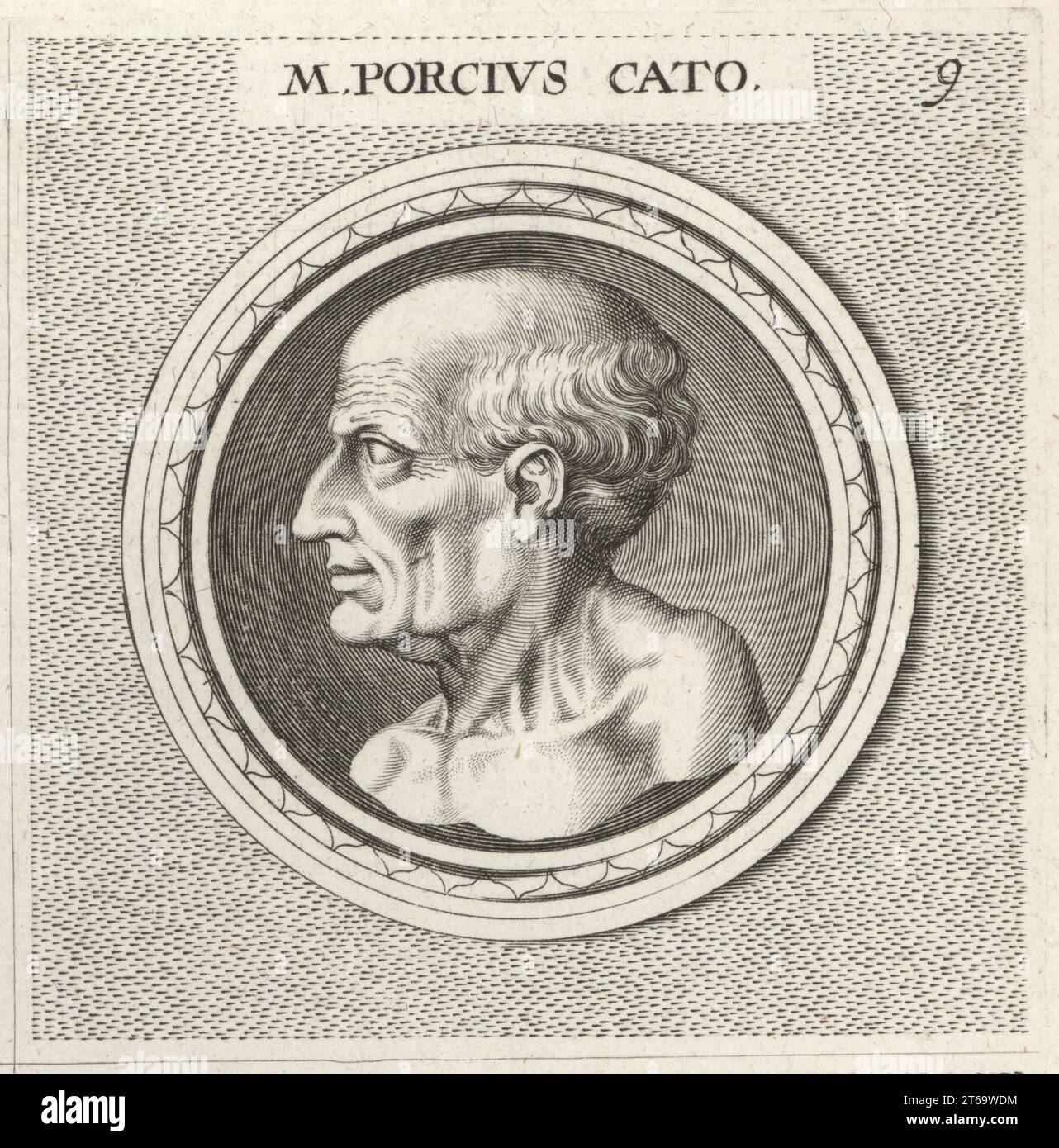 Marcus Porcius Cato, also known as Cato the Censor, the Elder and the Wise, Roman politician, writer, soldier, senator, and historian, 234149 BC. Known for his conservatism and opposition to Hellenization. M. Porcius Cato. Copperplate engraving after an illustration by Joachim von Sandrart from his LAcademia Todesca, della Architectura, Scultura & Pittura, oder Teutsche Academie, der Edlen Bau- Bild- und Mahlerey-Kunste, German Academy of Architecture, Sculpture and Painting, Jacob von Sandrart, Nuremberg, 1675. Stock Photohttps://www.alamy.com/image-license-details/?v=1https://www.alamy.com/marcus-porcius-cato-also-known-as-cato-the-censor-the-elder-and-the-wise-roman-politician-writer-soldier-senator-and-historian-234149-bc-known-for-his-conservatism-and-opposition-to-hellenization-m-porcius-cato-copperplate-engraving-after-an-illustration-by-joachim-von-sandrart-from-his-lacademia-todesca-della-architectura-scultura-pittura-oder-teutsche-academie-der-edlen-bau-bild-und-mahlerey-kunste-german-academy-of-architecture-sculpture-and-painting-jacob-von-sandrart-nuremberg-1675-image571847632.html
Marcus Porcius Cato, also known as Cato the Censor, the Elder and the Wise, Roman politician, writer, soldier, senator, and historian, 234149 BC. Known for his conservatism and opposition to Hellenization. M. Porcius Cato. Copperplate engraving after an illustration by Joachim von Sandrart from his LAcademia Todesca, della Architectura, Scultura & Pittura, oder Teutsche Academie, der Edlen Bau- Bild- und Mahlerey-Kunste, German Academy of Architecture, Sculpture and Painting, Jacob von Sandrart, Nuremberg, 1675. Stock Photohttps://www.alamy.com/image-license-details/?v=1https://www.alamy.com/marcus-porcius-cato-also-known-as-cato-the-censor-the-elder-and-the-wise-roman-politician-writer-soldier-senator-and-historian-234149-bc-known-for-his-conservatism-and-opposition-to-hellenization-m-porcius-cato-copperplate-engraving-after-an-illustration-by-joachim-von-sandrart-from-his-lacademia-todesca-della-architectura-scultura-pittura-oder-teutsche-academie-der-edlen-bau-bild-und-mahlerey-kunste-german-academy-of-architecture-sculpture-and-painting-jacob-von-sandrart-nuremberg-1675-image571847632.htmlRM2T69WDM–Marcus Porcius Cato, also known as Cato the Censor, the Elder and the Wise, Roman politician, writer, soldier, senator, and historian, 234149 BC. Known for his conservatism and opposition to Hellenization. M. Porcius Cato. Copperplate engraving after an illustration by Joachim von Sandrart from his LAcademia Todesca, della Architectura, Scultura & Pittura, oder Teutsche Academie, der Edlen Bau- Bild- und Mahlerey-Kunste, German Academy of Architecture, Sculpture and Painting, Jacob von Sandrart, Nuremberg, 1675.
 Marcus Porcius Cato, also known as Cato the Censor, the Elder and the Wise, Roman politician, writer, soldier, senator, and historian, 234–149 BC. Known for his conservatism and opposition to Hellenization. M. Porcius Cato. Copperplate engraving after an illustration by Joachim von Sandrart from his L’Academia Todesca, della Architectura, Scultura & Pittura, oder Teutsche Academie, der Edlen Bau- Bild- und Mahlerey-Kunste, German Academy of Architecture, Sculpture and Painting, Jacob von Sandrart, Nuremberg, 1675. Stock Photohttps://www.alamy.com/image-license-details/?v=1https://www.alamy.com/marcus-porcius-cato-also-known-as-cato-the-censor-the-elder-and-the-wise-roman-politician-writer-soldier-senator-and-historian-234149-bc-known-for-his-conservatism-and-opposition-to-hellenization-m-porcius-cato-copperplate-engraving-after-an-illustration-by-joachim-von-sandrart-from-his-lacademia-todesca-della-architectura-scultura-pittura-oder-teutsche-academie-der-edlen-bau-bild-und-mahlerey-kunste-german-academy-of-architecture-sculpture-and-painting-jacob-von-sandrart-nuremberg-1675-image551393908.html
Marcus Porcius Cato, also known as Cato the Censor, the Elder and the Wise, Roman politician, writer, soldier, senator, and historian, 234–149 BC. Known for his conservatism and opposition to Hellenization. M. Porcius Cato. Copperplate engraving after an illustration by Joachim von Sandrart from his L’Academia Todesca, della Architectura, Scultura & Pittura, oder Teutsche Academie, der Edlen Bau- Bild- und Mahlerey-Kunste, German Academy of Architecture, Sculpture and Painting, Jacob von Sandrart, Nuremberg, 1675. Stock Photohttps://www.alamy.com/image-license-details/?v=1https://www.alamy.com/marcus-porcius-cato-also-known-as-cato-the-censor-the-elder-and-the-wise-roman-politician-writer-soldier-senator-and-historian-234149-bc-known-for-his-conservatism-and-opposition-to-hellenization-m-porcius-cato-copperplate-engraving-after-an-illustration-by-joachim-von-sandrart-from-his-lacademia-todesca-della-architectura-scultura-pittura-oder-teutsche-academie-der-edlen-bau-bild-und-mahlerey-kunste-german-academy-of-architecture-sculpture-and-painting-jacob-von-sandrart-nuremberg-1675-image551393908.htmlRM2R124FG–Marcus Porcius Cato, also known as Cato the Censor, the Elder and the Wise, Roman politician, writer, soldier, senator, and historian, 234–149 BC. Known for his conservatism and opposition to Hellenization. M. Porcius Cato. Copperplate engraving after an illustration by Joachim von Sandrart from his L’Academia Todesca, della Architectura, Scultura & Pittura, oder Teutsche Academie, der Edlen Bau- Bild- und Mahlerey-Kunste, German Academy of Architecture, Sculpture and Painting, Jacob von Sandrart, Nuremberg, 1675.
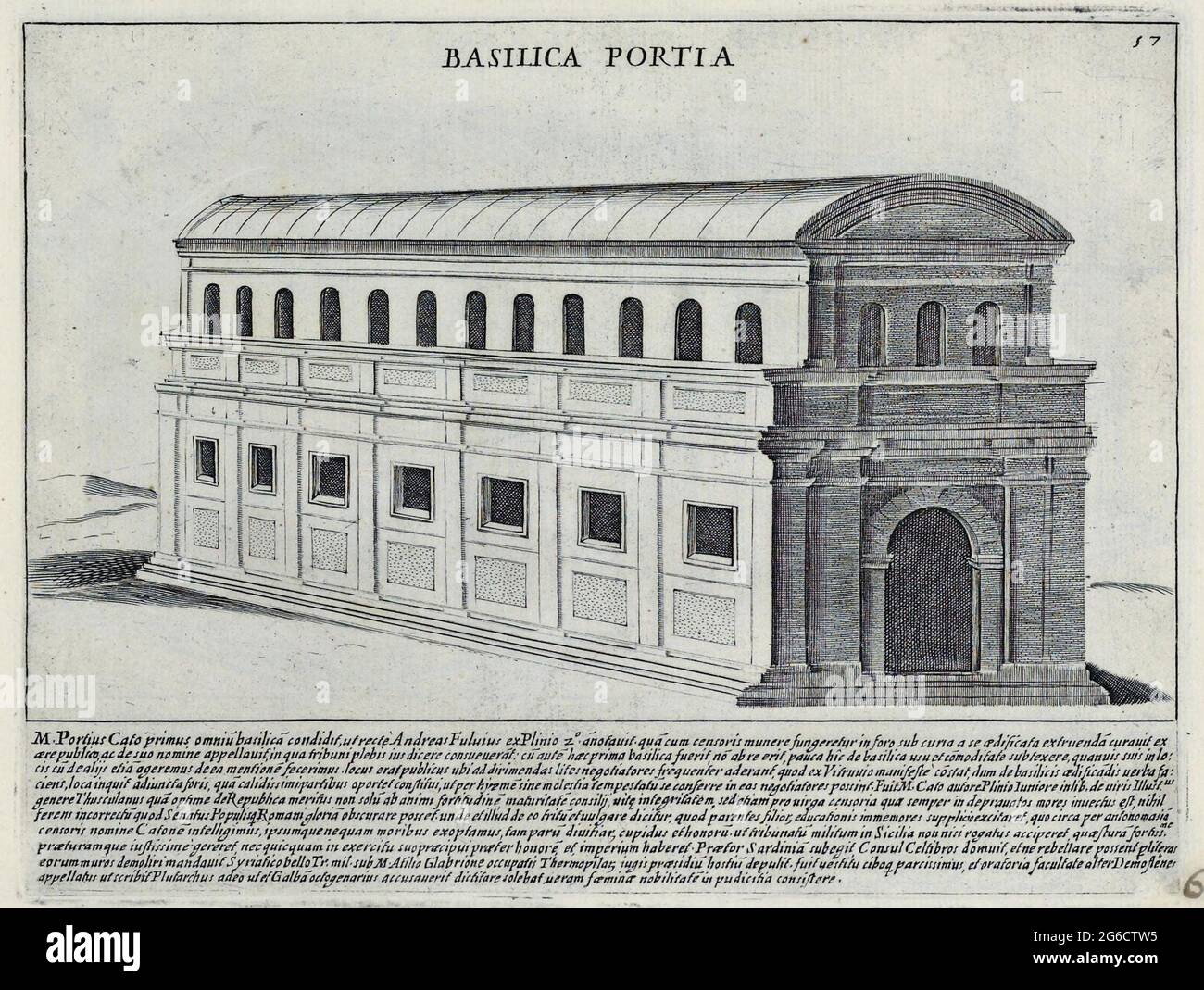 Die Basilica Portia wurde vermutlich von Marcus Porcius Cato erbaut, als er 184 v. Chr. Zensor war, historisches Rom, Italien, Splendore Dell' Antica Roma: The Splendors of Rome, Circa 1625 / historical Rome, Italy, The Basilica Portia was thought to have been built by Marcus Porcius Cato when he was censor in 184 BC, Historisch, historical, digital improved reproduction of an original from the 17th century / digitale Reproduktion einer Originalvorlage aus dem 17. Jahrhundert, Originaldatum nicht bekannt, Stock Photohttps://www.alamy.com/image-license-details/?v=1https://www.alamy.com/die-basilica-portia-wurde-vermutlich-von-marcus-porcius-cato-erbaut-als-er-184-v-chr-zensor-war-historisches-rom-italien-splendore-dell-antica-roma-the-splendors-of-rome-circa-1625-historical-rome-italy-the-basilica-portia-was-thought-to-have-been-built-by-marcus-porcius-cato-when-he-was-censor-in-184-bc-historisch-historical-digital-improved-reproduction-of-an-original-from-the-17th-century-digitale-reproduktion-einer-originalvorlage-aus-dem-17-jahrhundert-originaldatum-nicht-bekannt-image434230081.html
Die Basilica Portia wurde vermutlich von Marcus Porcius Cato erbaut, als er 184 v. Chr. Zensor war, historisches Rom, Italien, Splendore Dell' Antica Roma: The Splendors of Rome, Circa 1625 / historical Rome, Italy, The Basilica Portia was thought to have been built by Marcus Porcius Cato when he was censor in 184 BC, Historisch, historical, digital improved reproduction of an original from the 17th century / digitale Reproduktion einer Originalvorlage aus dem 17. Jahrhundert, Originaldatum nicht bekannt, Stock Photohttps://www.alamy.com/image-license-details/?v=1https://www.alamy.com/die-basilica-portia-wurde-vermutlich-von-marcus-porcius-cato-erbaut-als-er-184-v-chr-zensor-war-historisches-rom-italien-splendore-dell-antica-roma-the-splendors-of-rome-circa-1625-historical-rome-italy-the-basilica-portia-was-thought-to-have-been-built-by-marcus-porcius-cato-when-he-was-censor-in-184-bc-historisch-historical-digital-improved-reproduction-of-an-original-from-the-17th-century-digitale-reproduktion-einer-originalvorlage-aus-dem-17-jahrhundert-originaldatum-nicht-bekannt-image434230081.htmlRF2G6CTW5–Die Basilica Portia wurde vermutlich von Marcus Porcius Cato erbaut, als er 184 v. Chr. Zensor war, historisches Rom, Italien, Splendore Dell' Antica Roma: The Splendors of Rome, Circa 1625 / historical Rome, Italy, The Basilica Portia was thought to have been built by Marcus Porcius Cato when he was censor in 184 BC, Historisch, historical, digital improved reproduction of an original from the 17th century / digitale Reproduktion einer Originalvorlage aus dem 17. Jahrhundert, Originaldatum nicht bekannt,
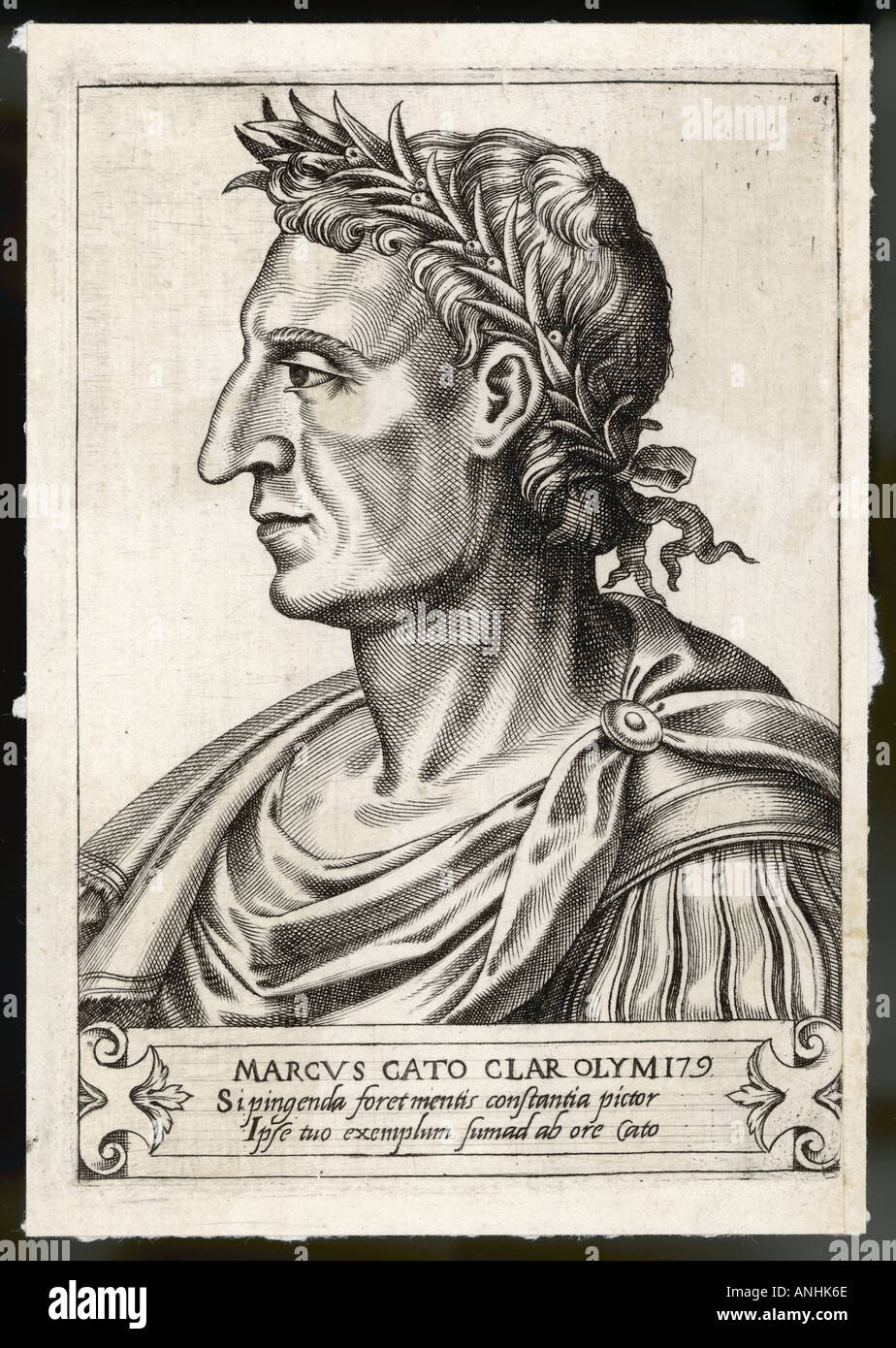 Cato 234 149 Bc Stock Photohttps://www.alamy.com/image-license-details/?v=1https://www.alamy.com/cato-234-149-bc-image5070701.html
Cato 234 149 Bc Stock Photohttps://www.alamy.com/image-license-details/?v=1https://www.alamy.com/cato-234-149-bc-image5070701.htmlRMANHK6E–Cato 234 149 Bc
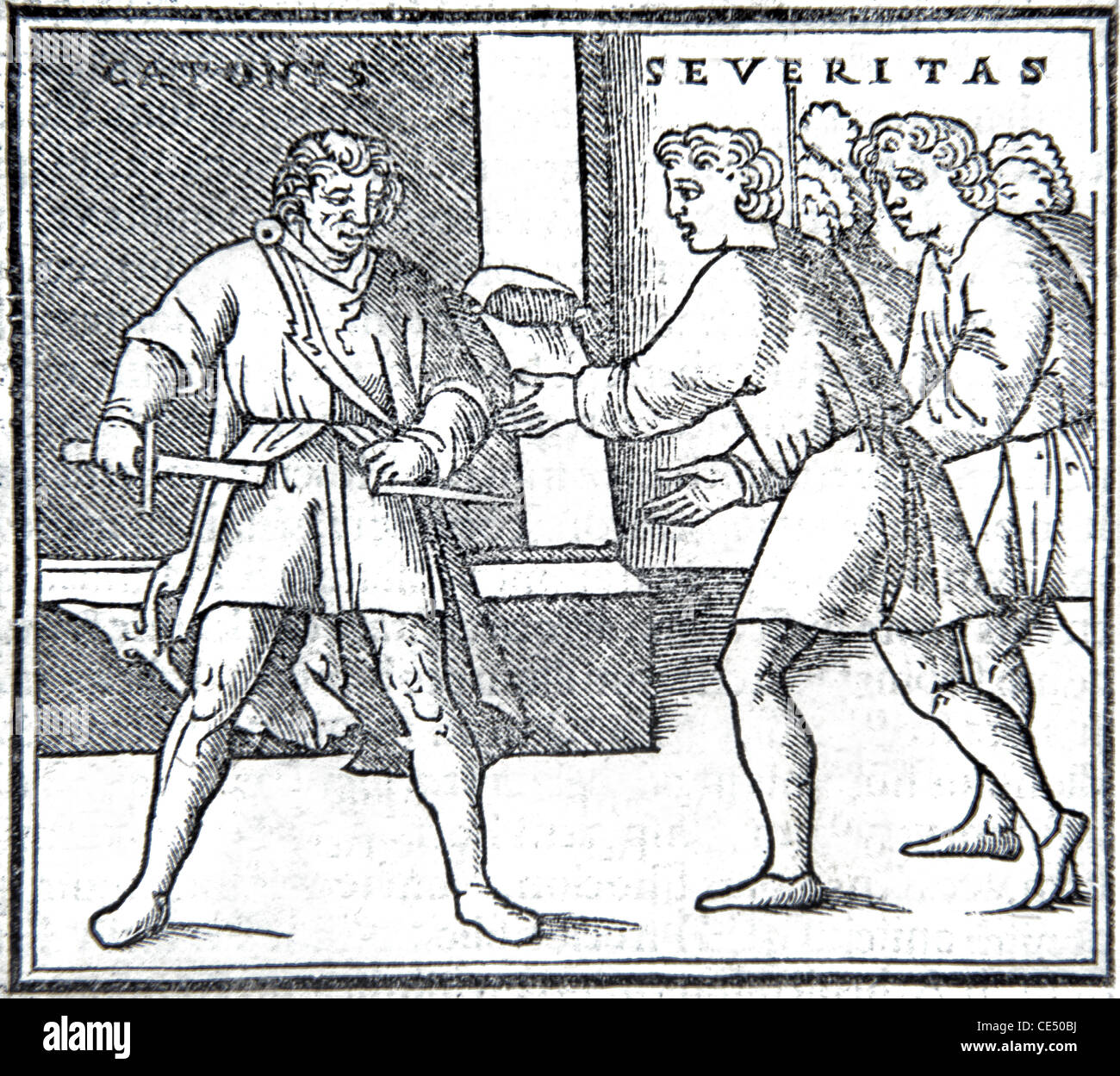 Cato the Elder, or Cato the Censor (234-149BC) of Rome & His Severity. Roman Statesman Marcus Porcius Cato. c16th Wood Engraving Stock Photohttps://www.alamy.com/image-license-details/?v=1https://www.alamy.com/stock-photo-cato-the-elder-or-cato-the-censor-234-149bc-of-rome-his-severity-roman-43136006.html
Cato the Elder, or Cato the Censor (234-149BC) of Rome & His Severity. Roman Statesman Marcus Porcius Cato. c16th Wood Engraving Stock Photohttps://www.alamy.com/image-license-details/?v=1https://www.alamy.com/stock-photo-cato-the-elder-or-cato-the-censor-234-149bc-of-rome-his-severity-roman-43136006.htmlRMCE50BJ–Cato the Elder, or Cato the Censor (234-149BC) of Rome & His Severity. Roman Statesman Marcus Porcius Cato. c16th Wood Engraving
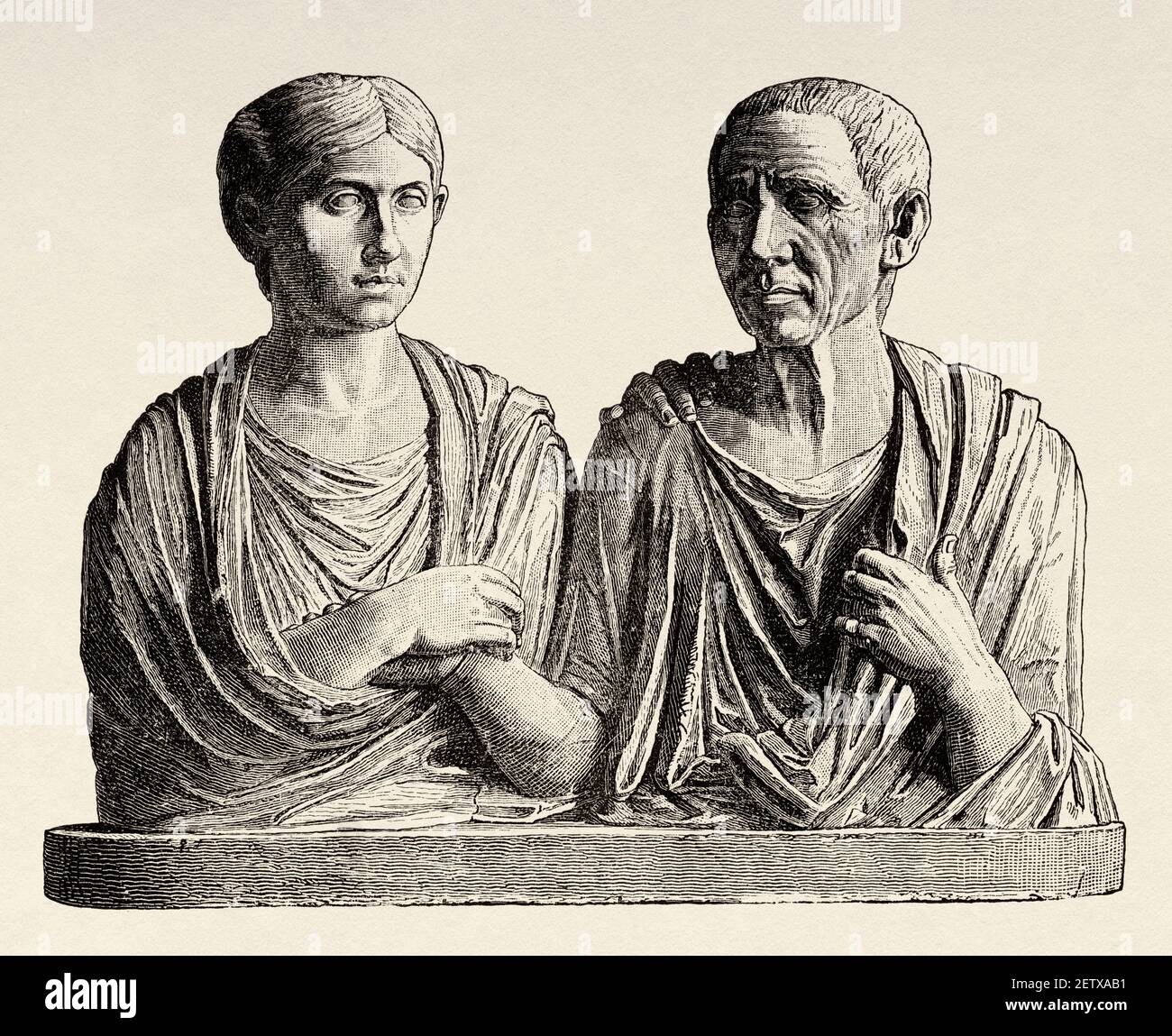 Cato and Porcia. Marcus Porcius Cato, 234 BC to 149 BC Roman statesman, Ancient roman empire. Italy, Europe. Old 19th century engraved illustration, El Mundo Ilustrado 1881 Stock Photohttps://www.alamy.com/image-license-details/?v=1https://www.alamy.com/cato-and-porcia-marcus-porcius-cato-234-bc-to-149-bc-roman-statesman-ancient-roman-empire-italy-europe-old-19th-century-engraved-illustration-el-mundo-ilustrado-1881-image411169109.html
Cato and Porcia. Marcus Porcius Cato, 234 BC to 149 BC Roman statesman, Ancient roman empire. Italy, Europe. Old 19th century engraved illustration, El Mundo Ilustrado 1881 Stock Photohttps://www.alamy.com/image-license-details/?v=1https://www.alamy.com/cato-and-porcia-marcus-porcius-cato-234-bc-to-149-bc-roman-statesman-ancient-roman-empire-italy-europe-old-19th-century-engraved-illustration-el-mundo-ilustrado-1881-image411169109.htmlRM2ETXAB1–Cato and Porcia. Marcus Porcius Cato, 234 BC to 149 BC Roman statesman, Ancient roman empire. Italy, Europe. Old 19th century engraved illustration, El Mundo Ilustrado 1881
